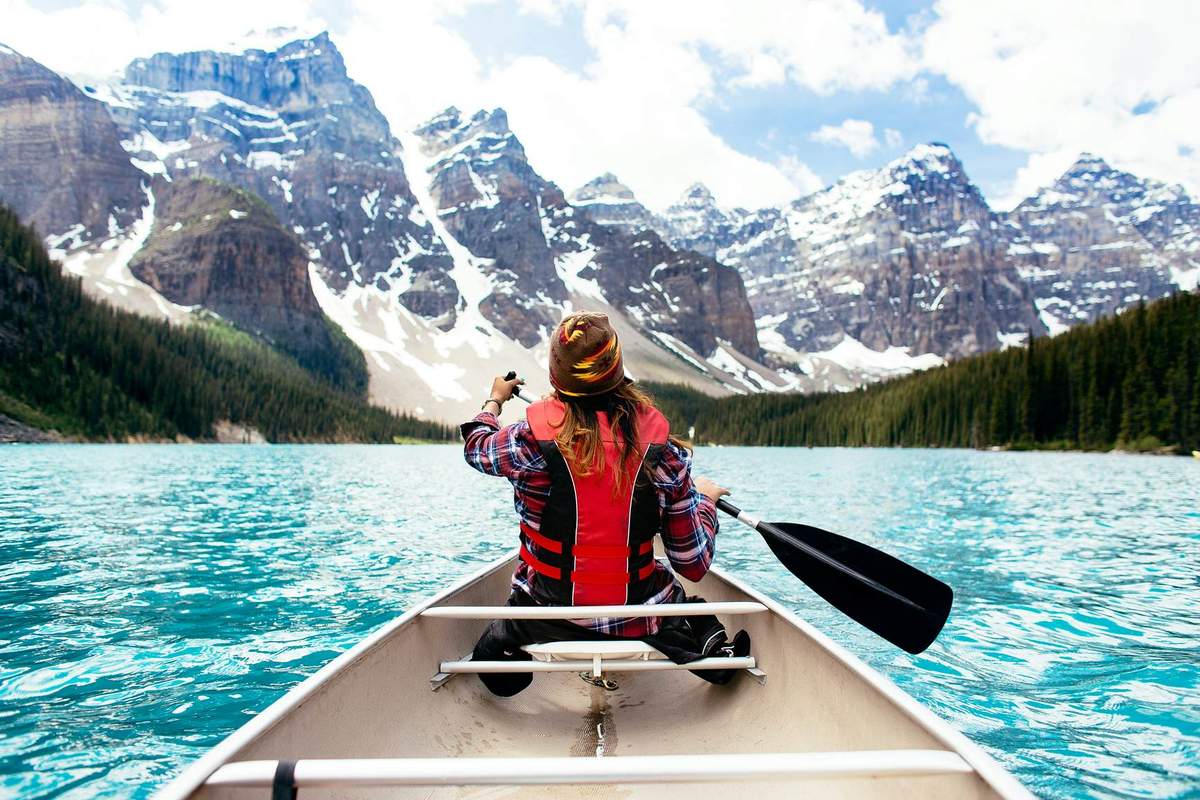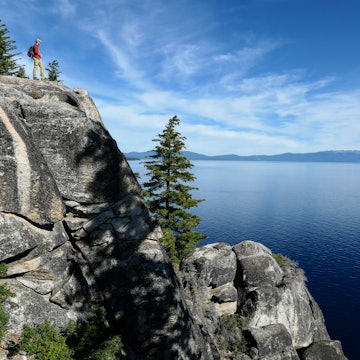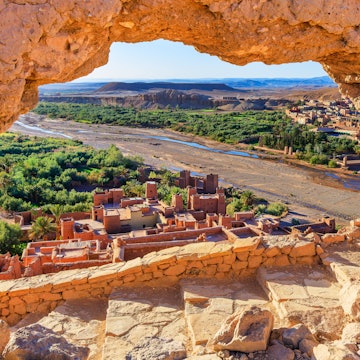

The beauty of the Bay of Fundy. Justin Foulkes for Lonely Planet
Canada is a big beauty where you can chase the northern lights, go iceberg hunting, climb mountains, photograph puffins and see the country's Big Five (polar bears, black bears, moose, bison and beluga whales). The world’s second largest country is admittedly huge, but we’ve scouted its 10 provinces and three territories to find the prettiest places to visit in Canada.

1. Gros Morne National Park, Newfoundland and Labrador
Best for landscapes
UNESCO made Gros Morne National Park a World Heritage Site for its international geological importance and exceptional beauty. Walk on the Earth’s exposed mantle at the Tablelands, an orange and otherworldly landscape. Take a challenging hike up Gros Morne Mountain or cruise Western Brook Pond, a landlocked freshwater fjord and one of the park’s crown jewels. Watch for moose when driving.
Planning tip: BonTours runs Western Brook Pond boat trips between May and October.

2. Fogo Island, Newfoundland and Labrador
Best for community charm
The Fogo Island Inn put Fogo on the global radar of architecture, design and art lovers, but this island of 2200 residents is actually Newfoundland in microcosm with friendly folks, shed parties and a strong quilt and knitting culture. Hike Joe Batt’s Point Trail to the statue of an extinct great auk (a black and white seabird), take Fogo Island Boat Tours out to see a puffin colony and buy lobster from the fish plant.
Planning tip: Pair Fogo with Twillingate, a key spot along Iceberg Alley.

3. The Island Walk, Prince Edward Island
Best for walkers
Driving around wee PEI is a cinch, but now people are walking it as well — the perfect way to take in all the beautiful scenery. Retiree Bryson Guptill created the Island Walk in 2021 as a grassroots project to circumnavigate the island in 32 digestible sections. Tackle one section or do the whole 435 miles (700km) along the ocean, beaches, red dirt roads, paved roads and even a converted railway path.
Planning tip: Enjoy the sand dunes and beaches of Prince Edward Island National Park on Section 17-18 (Cymbria to Dalvay).

4. Cabot Trail, Nova Scotia
Best for road-tripping
Whether you drive the Cabot Trail clockwise or counter-clockwise, it is one of the world’s most scenic routes. It offers an 185-mile (297km) joyride along the coast of Cape Breton Island with epic views and pitstops for sea kayaking, golf, whale-watching tours and Cape Smokey’s gondola. Hike Cape Breton Highlands National Park’s popular Skyline trail to catch the sunset from a dramatic headland cliff.
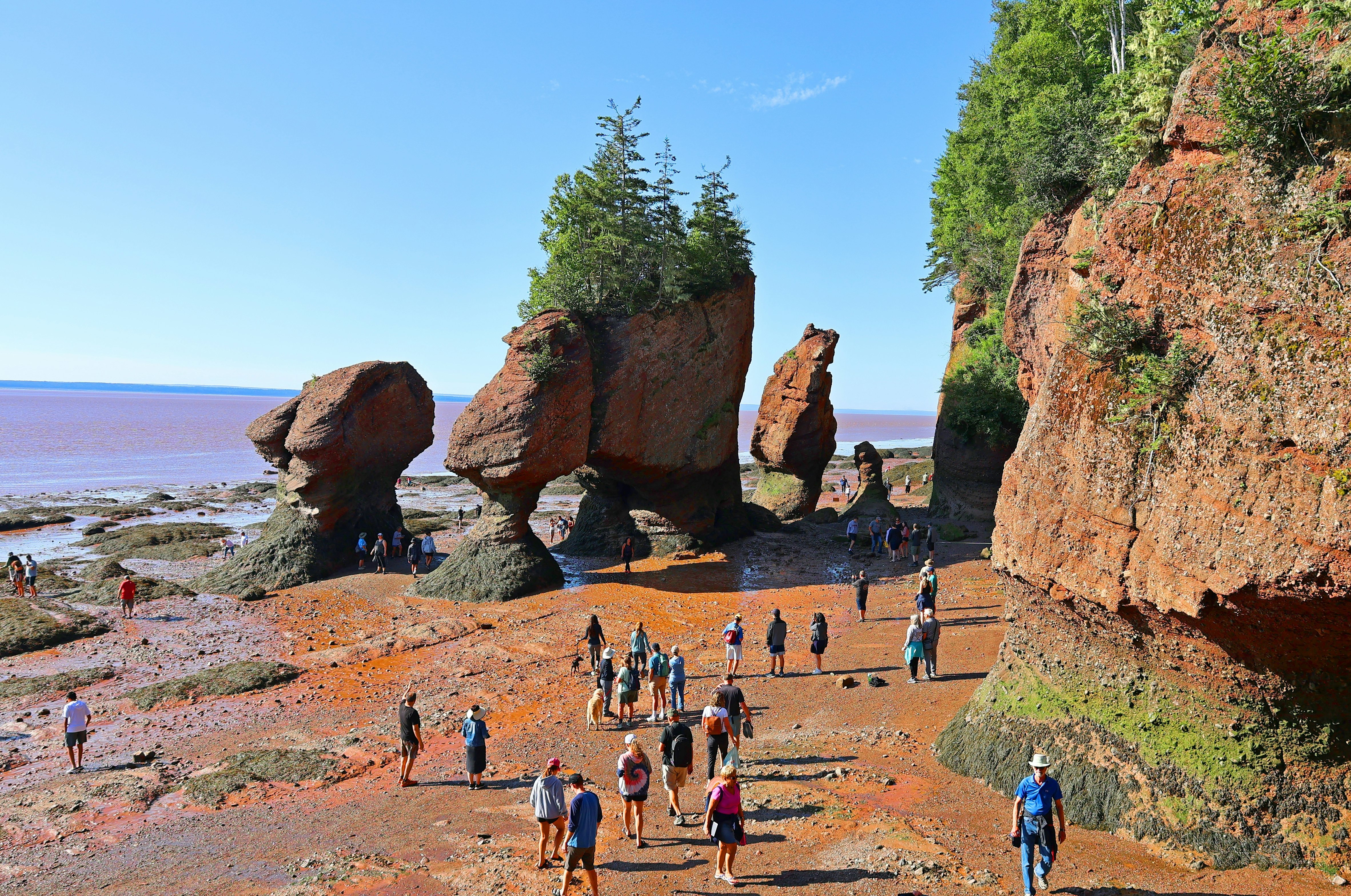
5. Bay of Fundy, New Brunswick
Best for watching the tides
The Bay of Fundy boasts the world’s highest tides. The tides — two high and two low each day — can rise 52 feet (0.3m), moving 160 billion tonnes of seawater in and out of the funnel-shaped bay. Hopewell Rocks Provincial Park is the best place to experience this natural wonder. First, walk the ocean floor at low tide to commune with towering flowerpot rocks (sea stacks). Then, take a guided sea kayaking trip with Baymount Outdoor Adventures at high tide to paddle around the tops of the sea stacks.
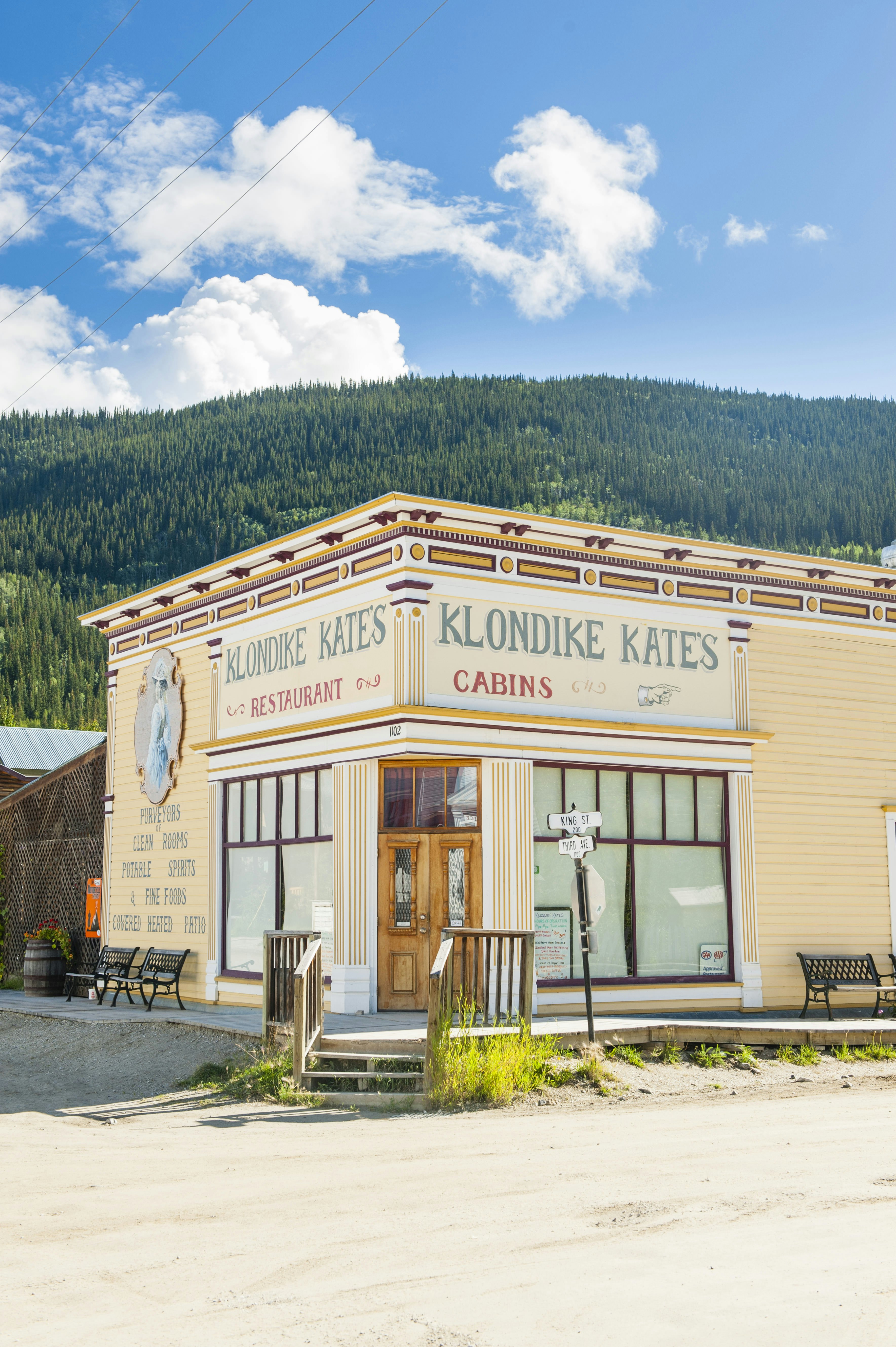
6. Dawson City, Yukon
Best for Klondike Gold Rush history
Gold was discovered here in Dawson City in 1896, sparking the Klondike Gold Rush and creating the “Paris of the North.” Now the scrappy frontier town tells its story in the buildings that make up the Dawson Historical Complex National Historic Site, at cancan shows at Diamond Tooth Gerties Gambling Hall and at Bonanza Creek where it all began. It’s truly a sight to behold.

7. Yellowknife, Northwest Territories
Best for chasing the northern lights
Yellowknife is easily the best place in Canada to see the northern lights, one of nature’s prettiest nighttime displays. That’s because the “Aurora Capital of the World” sits under the auroral oval and gets nature’s light show up to 240 times a year. Chase the northern lights by van, dogsled or snowmobile. Watch them from Indigenous-owned Aurora Village or spring for a luxury lodge.
Planning tip: There are aurora seasons in fall (August to October) and winter (December to April).
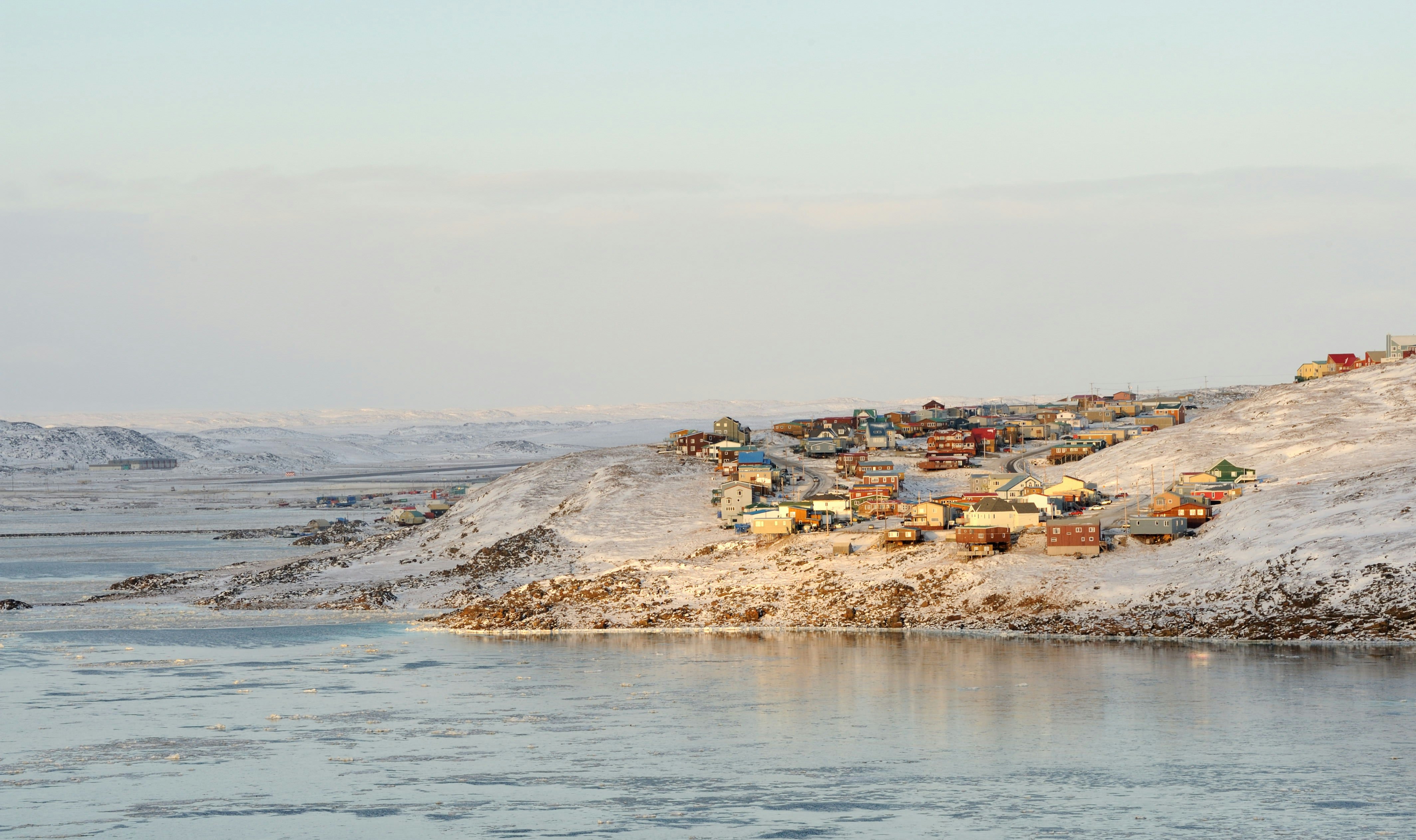
8. Iqaluit, Nunavut
Best for Inuit culture
Just 7400 people live in Canada’s smallest and youngest capital city on Baffin Island. Iconic Iqaluit sites include an igloo-shaped church, a bowhead whale-bone arch at the municipal cemetery and the “red boat” from a White Stripes video. Dogsled on the sea ice, check out the Unikkaarvik Visitor Centre and buy Inuit art at the Nunatta Sunakkutaangit Museum.

9. Haida Gwaii, British Columbia
Best for appreciating Haida culture
Haida Gwaii (“Islands of the People”) is a beautiful archipelago of 150 islands and the ancestral territory of the Haida Nation. The Haida Heritage Centre at Ḵay ‘Llnagaay is a good place to start exploring this heritage. Haida Style Expeditions offers day trips to village sites protected by the Haida Gwaii Watchmen in Gwaii Haanas National Park Reserve.
Planning tip: Rental cars are limited.

10. Golden, British Columbia
Best for quirky heritage
In the region where sport mountaineering in Canada began, a railway once built a mini-Swiss village for its mountaineering guides. More than a century later, Edelweiss Village+Resort has restored the six eclectic chalets. Consider laidback Golden: a springboard to explore the Kicking Horse Grizzly Bear Refuge, Golden Skybridge and four national parks (Yoho, Kootenay, Glacier and Mount Revelstoke).
Planning tip: Make a pitstop in Banff National Park on the three-hour drive from Calgary to Golden.

11. Abraham Lake, Alberta
Best for ice formations
Bubble season comes to magical Abraham Lake in central Alberta between December and March. That’s when this turquoise-hued lake near Nordegg freezes and displays millions of methane bubbles just below its clear surface. The bubbles are created thanks to decomposing grass and vegetation in the artificial lake. DIY or book an ice walk (by day or moonlight) or Nordic skate with Nordegg Adventures.

12. Grasslands National Park, Saskatchewan
Best for exploring the badlands
In the Grasslands National Park’s East Block, the evocatively named Valley of 1000 Devils Trail offers a challenging 7-mile (11.2km) trek from the grasslands to the badlands. Over in the West Block (a separate parcel two hours away), marvel at roaming herds of plains bison and a Black-tailed prairie dog colony.
Planning tip: There are no hotels near the East Block so book a Rock Creek Campground oTENTik (a hybrid tent/A-frame cabin) from Parks Canada.

13. Churchill, Manitoba
Best for polar bears
Remote Churchill has three seasonal draws — polar bears, beluga whales and the northern lights. This is the polar bear capital of the world; roughly 600 of the apex predators congregate nearby each fall waiting for the sea ice to freeze. Frontiers North Adventures whisks guests around in giant Tundra Buggies, while polar bears abound on SeaWall Churchill’s murals. Summer brings beluga whale watching trips.
Planning tip: Fly from Winnipeg to Churchill, or take VIA Rail’s 45-hour train trip.

14. Kensington Market, Toronto, Ontario
Best for vintage and indie shops
Since 1975, a storefront called Courage My Love has been the mecca for vintage shopping in Toronto and has anchored the indie-spirited Toronto neighborhood of Kensington Market. You won’t find chains in this culturally diverse hood, just cheesemongers, Latin grocery stores, second-hand shops and diverse eats like Chilean corn pie at Jumbo Empanadas and birria tacos from Gus Tacos.

15. Québec City, Québec
Best for cobblestones
Québec City, a UNESCO-recognized Francophone city, boasts the only fortified city walls in North America outside of Mexico. Tour the walls with Parks Canada and then stroll Old Québec’s cobblestone streets to see Umbrella Alley, the Fairmont Le Château Frontenac (the world’s most photographed hotel) and the archaeological crypt under the Dufferin Terrace.
Planning tip: The stunning Hôtel de Glace, North America’s only ice hotel, is just a half-hour away.






